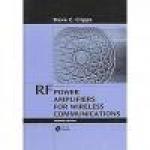Content that is free for public consumption with no subscription.
www.rfmentor.com
Tools and training to help your RF/Wireless career
Menu
Main menu
Quick Links
User menu
User login
Popular content
- Rick Lyons Blog on DSPRelated
- Everything RF
- Four Steps for Making Better Power Measurements
- OFDM Tutorial Applet
- Embrace Circuit Nonlinearity to get Transmitter 'Linearity' and Energy Efficiency
- The Essential Guide to Digital Signal Processing
- List of Free Books on DSP Topics
- Transmission Line Elements on Smith Chart Web App
- Complex to Real Website
- Stimson's Introduction to Airborne Radar



